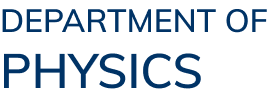Abstract
Hydrodynamics is not limited to describing fluid flow—it also provides a framework for understanding the collective behavior of electrons in solids.
Hydrodynamics emerges when the momentum-conserving electron-electron collision becomes the dominant scattering mechanism. In the hydrodynamic regime, scattering serves as lubricants for transport instead of hindering it as in the typical ohmic regime. In two spatial dimensions, the geometry of Fermi surface reduces the available phase space for scattering, resulting in enhanced lifetime of odd-parity collective modes of the Fermi surface. These enhanced collective modes lead to a new transport regime dubbed tomographic transport.
In my talk, I will first describe the theoretical framework of hydrodynamic and tomographic transport in Fermi liquids, alongside experimental evidence from systems such as graphene. I will then extend these ideas to the case when the interaction effects are taken to the extreme, where the rapid scattering destroys fermionic quasiparticles. In the intermediate temperature range, both hydrodynamic and tomographic transport regimes persist, offering a novel probe for clean non-Fermi liquids. At low temperatures, the odd-parity collective modes may destabilize the Fermi surface, suggesting that non-Fermi liquid metal might not exist as the ground state.
Haoyu Guo (郭浩宇) is a Bethe/Wilkins/KIC postdoctoral fellow at Cornell University. He received his PhD in physics from Harvard University under the supervision of Prof. Subir Sachdev in 2023, and bachelor’s degree in physics and math from Massachusetts Institute of Technology in 2018. His current research interests are (1) Quantum matter without quasiparticles such as non-Fermi liquids and strange metals. (2) Thermal Hall effect of magnetic systems. (3) Measurement-induced phase transition in interacting fermionic systems. (4) Dynamical freezing in Floquet many-body systems
